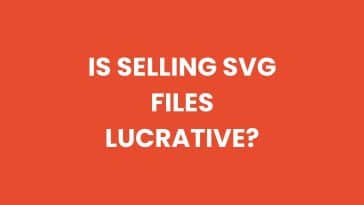Are you looking to elevate your design projects with high-quality graphics that won’t slow down your website or application? SVG files might be the perfect solution for you. In this blog post, we will delve into the world of SVG files, discussing their benefits and how to use them effectively in your projects. From understanding the file format to finding reliable download sources and optimizing download speed, we’ve got you covered. Whether you’re a seasoned designer or just starting out, this comprehensive guide will help you master the art of using SVG files in your projects.
Why Use Svg Files In Your Projects
SVG (Scalable Vector Graphics) files have become increasingly popular in various fields including graphic design, web development, and digital marketing. Their unique features and advantages make them an essential asset for creating visually appealing and scalable graphics. Unlike raster images, SVG files use mathematical equations to define elements within the image, allowing for crisp and clear graphics at any size. This blog post will explore the numerous benefits of using SVG files in your projects and provide insights on how to effectively utilize them.
One of the key advantages of SVG files is their scalability. Whether you need a small icon or a large banner, SVG files can maintain their quality and sharpness without any loss of detail. This is particularly beneficial for responsive web design, where images need to adapt to various screen sizes and resolutions. By using SVG files, you can ensure that your graphics always appear crisp and well-defined, regardless of the device being used to view them.
Additionally, SVG files have a smaller file size compared to traditional raster images like JPEG or PNG. This is because SVG files are created using mathematical formulas rather than storing each pixel individually. As a result, SVG files can be easily compressed, reducing download times and improving website performance. This is especially important for users with slower internet connections or those accessing your website on mobile devices.
| Advantages of SVG Files in Projects: | |
|---|---|
| 1. Scalability: | SVG files can be resized without losing quality. |
| 2. Small File Size: | SVG files are lightweight and load quickly. |
| 3. Compatibility: | SVG files can be easily embedded and customized. |
Furthermore, SVG files are compatible with a wide range of software and platforms. They can be easily embedded within HTML documents, making them ideal for website design and development. SVG files also support interactivity, allowing you to add animations, hover effects, and interactive elements to your graphics. With the increasing popularity of SVG, many design tools and software now offer seamless integration and support for SVG file formats.
In conclusion, the use of SVG files in your projects offers numerous advantages over traditional image formats. Their scalability, small file size, and compatibility make them a valuable asset for creating visually pleasing and responsive graphics. By utilizing SVG files, you can enhance the user experience, improve website performance, and easily customize your designs. So, next time you embark on a new project, consider incorporating SVG files for optimal results.

Understanding Svg File Formats
Understanding SVG file formats is essential for anyone working with vector graphics. SVG, which stands for Scalable Vector Graphics, is a popular format used for creating and displaying graphics on the web. Unlike raster image formats like JPEG or PNG, SVG files are composed of mathematical equations that enable them to be scaled to any size without losing quality. This makes SVG files ideal for logos, icons, and other graphics that need to be resized frequently. In this blog post, we will explore the different SVG file formats and their advantages and disadvantages.
SVG is an open standard developed by the World Wide Web Consortium (W3C) and is widely supported by all modern web browsers. It uses XML markup language to describe graphics, allowing easy manipulation and accessibility. SVG files can be created and edited using various tools, including vector graphics editors like Adobe Illustrator and Inkscape. These files can also be compressed, making it easier to transfer and load them on websites, resulting in faster loading times.
When working with SVG files, it’s important to understand the different file formats associated with it. The most common SVG formats include .svg, .svgz, and .svgz.bz2. The .svg format is the uncompressed version of the file and can be directly edited using a text editor. On the other hand, the .svgz format is compressed using gzip compression, resulting in smaller file sizes. Lastly, the .svgz.bz2 format is a further compressed version using the bzip2 compression algorithm, allowing for even smaller file sizes. However, it’s worth noting that compressed SVG files need to be decompressed before editing, which can add an extra step to the workflow.
To download SVG files, there are a few different approaches you can take. One option is to search for SVG files on various online platforms that offer free or paid downloads. These platforms often categorize SVG files based on topics, making it easier to find specific graphics. Another option is to create your own SVG files using vector graphics software. This gives you more control over the design and allows you to customize the graphics to fit your specific needs. Furthermore, you can also convert other file formats, such as PNG or JPEG, to SVG using file conversion tools. These tools help in maintaining the quality and scalability of the graphics during the conversion process.
- Download SVG files from online platforms
- Create your own SVG files using vector graphics software
- Convert other file formats to SVG using file conversion tools
In conclusion, understanding SVG file formats is crucial for anyone working with vector graphics. SVG files are highly versatile, allowing for easy scaling and manipulation without compromising quality. By knowing the different SVG file formats and how to download SVG files, you can effectively utilize them in your projects and enhance your web design capabilities.
| Advantages | Disadvantages |
|---|---|
| Easy scalability without loss of quality | Compressed files need to be decompressed before editing |
| Supported by all modern web browsers | Extra step required for editing compressed files |
| Compressed files result in faster loading times |
Finding Reliable Svg Download Sources
When it comes to working with SVG files, finding reliable sources for downloading these files becomes crucial. SVG, which stands for Scalable Vector Graphics, is widely used in various industries for its flexibility and compatibility. Whether you are a graphic designer, web developer, or hobbyist, it is important to have access to a wide range of SVG files to enhance your projects. In this blog post, we will explore different ways to find reliable SVG download sources and ensure the quality and authenticity of the files.
Online Communities and Forums
A great way to discover reliable SVG download sources is by tapping into online communities and forums dedicated to graphic design, web development, and digital art. Platforms like Reddit, Stack Exchange, and Dribbble have active communities of designers and developers who often share valuable resources, including SVG files. By actively engaging in these communities, you can learn about hidden gems when it comes to SVG download sources. Be sure to check the credibility and recommendations of community members to ensure the reliability of the sources.
Premium Stock Image Websites
If you are looking for high-quality SVG files for commercial projects or professional use, premium stock image websites can be an excellent source. Platforms like Shutterstock, Adobe Stock, and Getty Images offer a vast collection of SVG files created by talented designers. These websites usually have strict quality control measures, ensuring that you get reliable and top-notch SVG files. While subscription fees may apply, the peace of mind and quality assurance make it a worthwhile investment for serious projects.
Design Blogs and Marketplaces
Design blogs and marketplaces are an excellent resource for finding reliable SVG download sources. Many talented designers and artists share their work through their personal websites or platforms like Behance and Etsy. These websites often offer both free and premium SVG files, allowing you to choose according to your project requirements. Reading user reviews and ratings can give you an idea of the reliability and quality of the files, helping you make an informed decision.
Conclusion
As SVG files continue to gain popularity due to their scalability and compatibility, finding reliable download sources becomes essential. By exploring online communities, premium stock image websites, and design blogs/marketplaces, you can ensure access to high-quality SVG files for your projects. Remember to verify the authenticity and reputation of the sources before downloading any files. With the right sources, you can enhance your creative endeavors and take advantage of the versatility that SVG files offer.
Step-By-Step Guide To Downloading Svg Files
SVG (Scalable Vector Graphics) files have become increasingly popular in various fields such as graphic design, web development, and crafting. These vector-based images are not only high-quality but also resizable without any loss of detail. If you are new to working with SVG files and unsure about the download process, this step-by-step guide will walk you through the necessary steps to successfully download SVG files.
Step 1: Find a Reliable Source for SVG Downloads
To download SVG files, you need to find a reliable source that offers a wide range of options. There are numerous websites that provide free and paid SVG files. Some popular options include Freepik, Shutterstock, and Pixabay. Make sure to search for reputable websites, read reviews, and check the licensing terms to ensure that you can use the downloaded SVG files for your intended purpose.
Step 2: Browse and Select the Desired SVG File
Once you have found a reliable source, you can start browsing through the available SVG files. Most websites categorize the files based on themes or subjects, making it easier for you to find what you need. Take your time to explore different categories and select the SVG file that suits your project requirements.
Step 3: Check File Details and Compatibility
Before proceeding with the download, it is crucial to check the file details and ensure compatibility with your software or design tool. SVG files are generally compatible with popular graphic design software like Adobe Illustrator, CorelDRAW, and Inkscape. Make sure to read the file description and system requirements to avoid any potential compatibility issues.
Step 4: Click on the Download Button
Once you have chosen the SVG file, locate the download button usually placed near the file preview or description. Click on the download button, and the SVG file will start downloading to your device. Depending on the file size and your internet connection, the download process may take a few seconds or minutes.
Step 5: Organize and Store Your SVG Files
After successfully downloading the SVG files, it is crucial to organize and store them efficiently for easy access. Consider creating a dedicated folder on your computer for SVG files or using cloud storage services like Google Drive or Dropbox to store your collection. This ensures that you can easily locate and use the SVG files whenever needed.
By following this step-by-step guide, you can confidently navigate the process of downloading SVG files. Remember to choose reputable sources, check compatibility, and stay organized to enhance your workflow and make the most out of SVG files’ versatility in your projects.
Using File Conversion Tools For Svg Compatibility
SVG (Scalable Vector Graphics) files are becoming increasingly popular in various projects, thanks to their ability to scale without losing quality. However, not all software or devices support SVG files by default. This is where file conversion tools come in handy. These tools allow you to convert SVG files into different formats, making them compatible with a wider range of software and devices. In this blog post, we will explore how to use file conversion tools effectively to ensure SVG compatibility.
When it comes to converting SVG files, there are several tools available that can assist you. One popular choice is Adobe Illustrator, which offers a straightforward and user-friendly conversion process. Simply open the SVG file in Illustrator and choose the desired output format, such as JPEG or PNG. Adobe Illustrator will then convert the SVG file into the selected format while preserving its quality and details.
Another handy tool for converting SVG files is Inkscape, an open-source vector graphics editor. Inkscape offers a wide range of conversion options and supports various file formats. Simply open the SVG file in Inkscape, go to the “File” menu, and select the “Save As” option. From there, you can choose the desired output format and convert the SVG file accordingly.
Organizing And Storing Your Svg File Collection
Organizing and Storing Your SVG File Collection
When working with SVG files, it is essential to have a well-organized collection to easily access and manage your files. Storing your SVG files in a systematic way not only saves you time but also ensures that you can quickly locate specific files when needed. In this blog post, we will discuss some effective strategies for organizing and storing your SVG file collection.
The first step in organizing your SVG file collection is to create a logical folder structure. This structure should be based on categories or themes that are relevant to your projects. For example, you could have folders for different design styles, such as “Minimalist”, “Hand-drawn”, or “Vintage”. Within these folders, you can further subdivide your files based on subcategories, such as “Animals”, “Flowers”, or “Icons”. Organizing your files in this way allows for easy navigation and retrieval.
In addition to creating a folder structure, it is also helpful to name your SVG files descriptively. Instead of generic names like “file1.svg” or “image.svg”, consider using meaningful names that reflect the content or purpose of the file. For instance, if the SVG file represents a tree, you could name it “tree.svg”. By using descriptive names, you can quickly identify the files you need without having to open each one individually. Furthermore
,
using appropriate metadata can be beneficial when organizing and storing SVG files. Including relevant keywords, tags, and descriptions can provide additional context and make it easier to search for specific files. This metadata can be added directly to the SVG file or stored in a separate accompanying file, such as a text document. By including metadata, you can easily filter and categorize your collection based on different criteria.
| Table: Example SVG File Organization | ||
|---|---|---|
| Folder: Design Styles | Folder: Animals | Folder: Flowers |
| Subfolder: Minimalist | File: cat.svg | File: rose.svg |
| Subfolder: Hand-drawn | File: dog.svg | File: lily.svg |
| Subfolder: Vintage | File: bird.svg | File: sunflower.svg |
By organizing and storing your SVG file collection in a structured manner, you can save valuable time and effort in locating specific files for your projects. Whether you are a designer, developer, or hobbyist, implementing these strategies will help you stay organized and maintain an efficient workflow when working with SVG files.

Tips To Speed Up Svg File Downloading
When it comes to working with SVG files, download speed can often be a frustrating issue. Slow download speeds not only impact productivity but can also hinder the efficiency of your projects. In this blog post, we will explore some useful tips to speed up SVG file downloading and ensure a smooth workflow. By implementing these strategies, you can optimize your download process, save time, and enhance your overall experience with SVG files.
Tip 1: Clear Your Cache Regularly
One of the simplest yet effective ways to speed up SVG file downloading is by regularly clearing your cache. Caches store data from previously visited websites, including images, scripts, and other web content. Over time, your cache can become cluttered, leading to slower download speeds. By clearing your cache, you remove unnecessary files and allow your browser to download SVG files more efficiently.
Tip 2: Use a Reliable Internet Connection
The speed of your internet connection plays a crucial role in the download process. To ensure fast SVG file downloads, it is advisable to use a reliable internet connection with sufficient bandwidth. Consider connecting to a high-speed Wi-Fi network or using an Ethernet cable for a more stable and faster connection. Slow internet speeds can significantly impact the time it takes to download SVG files.
Tip 3: Download from Trusted Sources
When downloading SVG files, it is essential to use reliable and trustworthy sources. Unreliable sources may have slow servers or offer files that are not properly optimized, resulting in slower downloads. Look for reputable websites or platforms that specialize in SVG files and have a good reputation for providing high-quality downloads. This will significantly improve your download speeds and ensure you are using optimized SVG files for your projects.
Frequently Asked Questions
Why should I use SVG files in my projects?
SVG files are scalable vector graphics that can be resized without losing quality, making them ideal for responsive design and various screen sizes. They also have smaller file sizes compared to other image formats, resulting in faster website loading times.
What is the significance of understanding SVG file formats?
Understanding SVG file formats is important because it allows you to select the appropriate file type for your project needs. Different SVG formats, such as SVG, SVGZ, and SVGX, have different compression and compatibility features that can affect file size and performance.
Where can I find reliable sources to download SVG files?
You can find reliable sources to download SVG files from various online platforms such as graphic design marketplaces, websites specializing in SVG files, or online communities where designers share their creations. It is important to choose sources that offer high-quality and legally licensed SVG files.
Can you provide a step-by-step guide to downloading SVG files?
Sure! Here is a step-by-step guide to downloading SVG files:
1. Find a reliable source for SVG files.
2. Browse and select the desired SVG file.
3. Click on the download button or link provided.
4. Choose a storage location on your computer.
5. Wait for the download to complete.
6. Access the downloaded SVG file in the chosen storage location.
How can I ensure SVG file compatibility with different software and devices?
You can use file conversion tools to convert SVG files to different formats, such as PNG or JPEG, which are widely supported by various software and devices. This allows you to use SVG files in a broader range of applications and ensures compatibility with different platforms.
What is the best way to organize and store my SVG file collection?
Organizing and storing your SVG file collection is essential to easily locate and manage your files. You can create a folder hierarchy based on categories, themes, or projects. Additionally, using file naming conventions and metadata can help further organize and search for specific SVG files.
Do you have any tips to speed up SVG file downloading?
Yes! Here are some tips to speed up SVG file downloading:
1. Use a high-speed and stable internet connection.
2. Opt for SVG file sources that offer optimized file sizes.
3. Check for any browser extensions or plugins that may be slowing down the download process.
4. Close unnecessary tabs or applications to allocate more bandwidth to the download.
5. Consider using a download manager tool to manage and accelerate multiple SVG file downloads simultaneously.




 No products in the cart.
No products in the cart.